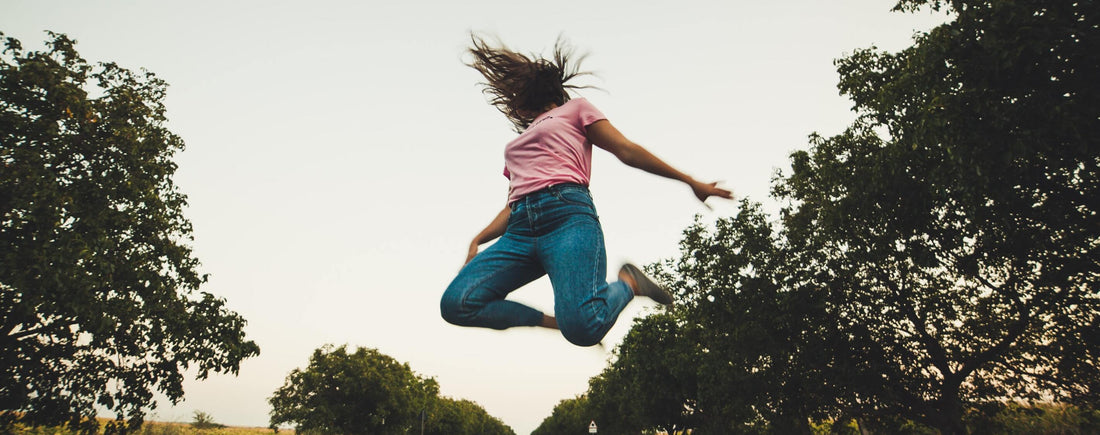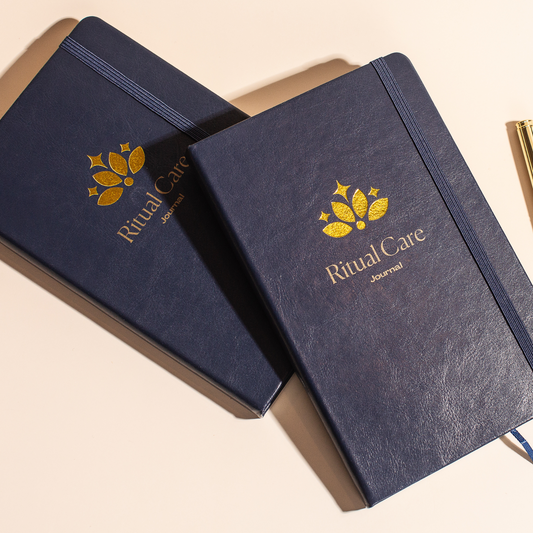Fitness and wellness are powerful parts of a healthy lifestyle. Things are always going to change, and here is my story of rebuilding myself after an injury. You can use the lessons I learned to help your own journey and approach to integrating exercise into your life.
At the age of 15, I found out that I had two herniated discs in my lower back. Luckily, I was able to avoid surgery, but I still had to stop participating in sports. I was going to physical therapy two to three times a week before my first morning classes and carrying around a donut pillow because the desks were too aggravating for my back. After relearning my body through physical therapy, my inner athlete was craving exercise again. While basketball and volleyball were out of the question, a friend suggested Pilates.
After the first session, my instructor’s notes were that I could not do spinal extension, spinal flexion, spinal rotation, or lateral flexion. Basically, I was to keep my back in a neutral position, maintain a strong core, and learn to move my limbs through their full range of motion without straining or calling into my back for assistance. These movement fundamentals are rarely emphasized to people unless they have experienced some sort of injury.
I left for college in 2013, and the only time I cared for my injury was when I would go back home during holidays and had access to the Pilates studio again. My thoughts were, “If I do a couple of sessions when I’m home, that should hold me over until the next time I come back!” This wasn’t the best approach since I experienced terrible back spasms every four to six months for the first four years following my injury. My instructor eventually showed me exercises that could be done at my university’s gym. After learning the mechanics and groundwork of movement, I started to appropriately challenge, listen, and adjust to my body’s needs.
By 2015, my junior year of college, I finally felt confident enough to pick up heavy weights and was slowly able to integrate styles of training that I used to love when I participated in sports. It was the consistency of the preventative exercises, and the gradual integration of weight training, that became my recipe for success. The last back spasm I’ve had was in March 2018.
While my back will never be one hundred percent again, the lessons I’ve learned over these past ten years are something for which I will be forever grateful. The rebuilding process both humbled and strengthened me in ways that I could never have experienced without my injury.
There are five lessons that I learned during this process and carry with me throughout my approach to training myself and my clients.
If you have recently found yourself in a place of rebuilding, try not to focus so much on the end result. Sometimes looking at the big picture can be very intimidating, and the most important part of the renewal process is to just get to that starting line. Just taking that first step toward creating new, healthy habits is the hardest part, so celebrate the fact that you have chosen to embark on this journey.
This can tie in with the previous lesson, but it’s important to see the two separately. Now that you have taken that first step toward rebuilding yourself, don’t expect to get everything perfect the first time you try something new. Brace yourself to start with the “boring” basics. For example, when you are learning to play the piano, you will start by playing, “Twinkle Twinkle, Little Star.” It’s by constantly practicing how to properly move your fingers across the keyboard on simple songs like this that could eventually lead to playing “River Flows in You” with the same effortless elegance as Yiruma.
As a trainer, I can’t emphasize this enough. Your body cannot build muscle or increase in flexibility (or endurance) if you are not taking the time to recover. Sleep is probably one of the most overlooked elements of the renewal process. Your body is doing the most recovery and rebuilding during times of rest. If you aren’t taking the time to incorporate adequate amounts of recovery such as sleep, hydration, and stretching into your newest workout routine, your chances of injury and lack of progress are more likely.
Now that you’ve taken the time to recover, practice, and appreciate the basics, it is important to challenge the progress that you have made. The only way to know if what you are doing is working is to put that hard work to the test. If you spend too much time in your comfort zone, you will remain in a fairly stagnant state, and while it is less intimidating, you have to remember that you were created to be dynamic. You are made to adjust to change and challenges—that is how you continue to progress.
Personally, this was one of the hardest lessons for me to learn. Because I have lived with the injury and studied the human body, I implanted in my own mind that I was supposed to have all the answers, but that, in itself, was a sign of a halt in growth. Of course I understand my own body well, but in order to actually challenge myself, I needed to step outside of myself. Finding mentors and my own personal trainer are the reasons why I succeed at my job and am able to better take care of myself. It is so important to have a community of encouraging and driven people around you when you are going through a personal renewal process. The conversations and lessons that are learned from people who you respect will be far more impactful than you could ever imagine.
As a trainer, these are some of the most important tools I can give to my clients, friends, and family. It was a long process to switch my mindset of seeing exercise as a chore to a lifestyle, but these lessons serve as reminders that fitness and wellness are for everyone and anyone, whether you are brand new to exercise, are looking to overcome an injury, or ready to get back to exercise. Each of our journeys is different because we are different, and you owe it to yourself and your body to approach each day according to what you need to be the best version of yourself.
Ready to take control of your health? Download the Chopra App for personalized well-being guidance you can access anywhere.
At the age of 15, I found out that I had two herniated discs in my lower back. Luckily, I was able to avoid surgery, but I still had to stop participating in sports. I was going to physical therapy two to three times a week before my first morning classes and carrying around a donut pillow because the desks were too aggravating for my back. After relearning my body through physical therapy, my inner athlete was craving exercise again. While basketball and volleyball were out of the question, a friend suggested Pilates.
After the first session, my instructor’s notes were that I could not do spinal extension, spinal flexion, spinal rotation, or lateral flexion. Basically, I was to keep my back in a neutral position, maintain a strong core, and learn to move my limbs through their full range of motion without straining or calling into my back for assistance. These movement fundamentals are rarely emphasized to people unless they have experienced some sort of injury.
I left for college in 2013, and the only time I cared for my injury was when I would go back home during holidays and had access to the Pilates studio again. My thoughts were, “If I do a couple of sessions when I’m home, that should hold me over until the next time I come back!” This wasn’t the best approach since I experienced terrible back spasms every four to six months for the first four years following my injury. My instructor eventually showed me exercises that could be done at my university’s gym. After learning the mechanics and groundwork of movement, I started to appropriately challenge, listen, and adjust to my body’s needs.
By 2015, my junior year of college, I finally felt confident enough to pick up heavy weights and was slowly able to integrate styles of training that I used to love when I participated in sports. It was the consistency of the preventative exercises, and the gradual integration of weight training, that became my recipe for success. The last back spasm I’ve had was in March 2018.
While my back will never be one hundred percent again, the lessons I’ve learned over these past ten years are something for which I will be forever grateful. The rebuilding process both humbled and strengthened me in ways that I could never have experienced without my injury.
There are five lessons that I learned during this process and carry with me throughout my approach to training myself and my clients.
1. You Have to Learn to Crawl Before You Can Run
If you have recently found yourself in a place of rebuilding, try not to focus so much on the end result. Sometimes looking at the big picture can be very intimidating, and the most important part of the renewal process is to just get to that starting line. Just taking that first step toward creating new, healthy habits is the hardest part, so celebrate the fact that you have chosen to embark on this journey.
2. Don’t Underestimate the Basics
This can tie in with the previous lesson, but it’s important to see the two separately. Now that you have taken that first step toward rebuilding yourself, don’t expect to get everything perfect the first time you try something new. Brace yourself to start with the “boring” basics. For example, when you are learning to play the piano, you will start by playing, “Twinkle Twinkle, Little Star.” It’s by constantly practicing how to properly move your fingers across the keyboard on simple songs like this that could eventually lead to playing “River Flows in You” with the same effortless elegance as Yiruma.
3. Remember that Recovery Promotes Progress
As a trainer, I can’t emphasize this enough. Your body cannot build muscle or increase in flexibility (or endurance) if you are not taking the time to recover. Sleep is probably one of the most overlooked elements of the renewal process. Your body is doing the most recovery and rebuilding during times of rest. If you aren’t taking the time to incorporate adequate amounts of recovery such as sleep, hydration, and stretching into your newest workout routine, your chances of injury and lack of progress are more likely.
4. Learn When You Need to Push Yourself
Now that you’ve taken the time to recover, practice, and appreciate the basics, it is important to challenge the progress that you have made. The only way to know if what you are doing is working is to put that hard work to the test. If you spend too much time in your comfort zone, you will remain in a fairly stagnant state, and while it is less intimidating, you have to remember that you were created to be dynamic. You are made to adjust to change and challenges—that is how you continue to progress.
5. Don’t Expect to Do It on Your Own
Personally, this was one of the hardest lessons for me to learn. Because I have lived with the injury and studied the human body, I implanted in my own mind that I was supposed to have all the answers, but that, in itself, was a sign of a halt in growth. Of course I understand my own body well, but in order to actually challenge myself, I needed to step outside of myself. Finding mentors and my own personal trainer are the reasons why I succeed at my job and am able to better take care of myself. It is so important to have a community of encouraging and driven people around you when you are going through a personal renewal process. The conversations and lessons that are learned from people who you respect will be far more impactful than you could ever imagine.
As a trainer, these are some of the most important tools I can give to my clients, friends, and family. It was a long process to switch my mindset of seeing exercise as a chore to a lifestyle, but these lessons serve as reminders that fitness and wellness are for everyone and anyone, whether you are brand new to exercise, are looking to overcome an injury, or ready to get back to exercise. Each of our journeys is different because we are different, and you owe it to yourself and your body to approach each day according to what you need to be the best version of yourself.
Ready to take control of your health? Download the Chopra App for personalized well-being guidance you can access anywhere.






















